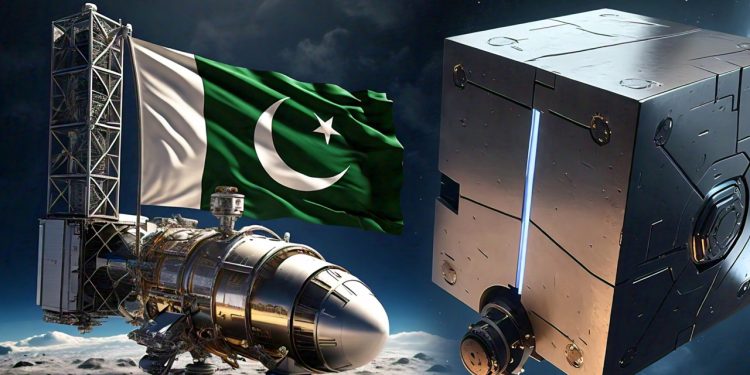Pakistan’s inaugural lunar mission, iCube Qamar, has achieved a milestone by successfully entering orbit, according to Dr. Khurram Khurshid, a key member of the core team at the Institute of Space Technology (IST). The deployment of the orbiter occurred on May 8th at 1:14 PM PST, marking a significant triumph for the project.
Following its deployment, the satellite will facilitate imaging of selected Lunar surfaces from a meticulously chosen 12-hour elliptical orbit, Dr. Khurshid confirmed.
The iCube Qamar satellite was launched aboard China’s Chang’e-6 mission from Hainan, China, on May 3rd. Dr. Khurram Khurshid previously revealed that the Pakistani satellite, carried by China’s Long March-5 rocket, would reach lunar orbit within five days and conduct a three to six-month orbit around the moon.
Upon deployment, the satellite is expected to capture various images of the moon’s surface, thereby providing Pakistan with its own set of satellite images for research purposes.
The iCube Qamar orbiter, a collaborative effort between the Islamabad-based Institute of Space Technology (IST), China’s Shanghai Jiao Tong University (SJTU), and Pakistan’s national space agency Suparco, is equipped with two optical cameras tailored for lunar surface imaging.
CubeSats, such as iCube Qamar, are small satellites primarily employed by academic institutions for experimental and research endeavors in low Earth orbits. However, their utility is expanding to encompass higher orbits and deep space missions.
Given the moon’s elliptical orbit, approximately 384,400 km from Earth, communication and control of small satellites pose significant challenges. Nonetheless, the opportunity to deploy CubeSat into lunar orbit from the Chang’e-6 mission was extended by the China National Space Agency (CNSA) via the Asia Pacific Space Cooperation Organization (APSCO) to member states.
Pakistan’s proposal was selected from among all APSCO member states, leading to the design, development, and qualification of iCube-Qamar, spearheaded by faculty members and students of IST in collaboration with SJTU, and with support from Suparco.
iCube Qamar features two cameras dedicated to imaging the lunar surface and Earth/moon images from lunar orbit, in addition to possessing 3-axis altitude control, onboard computing capabilities, thermal regulation, telemetry, telecommand, and payload data communication modules for connectivity through the deep space network.






